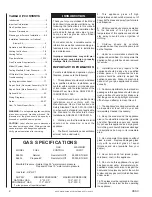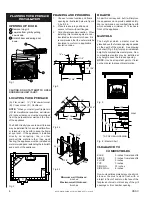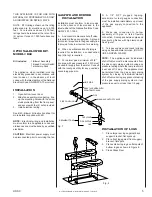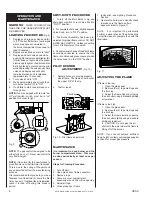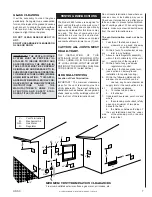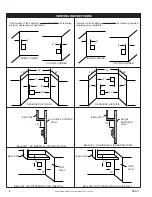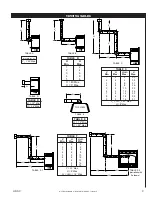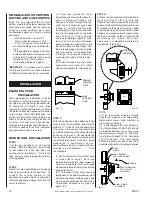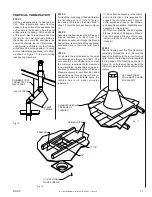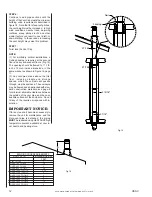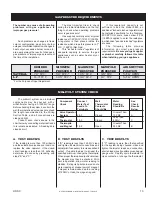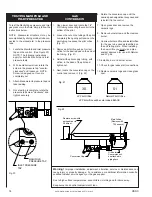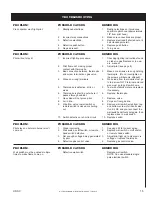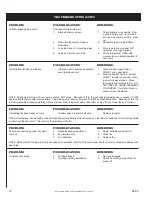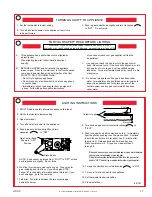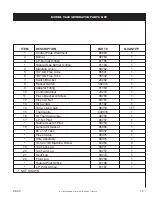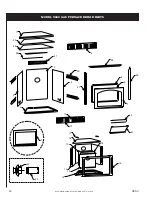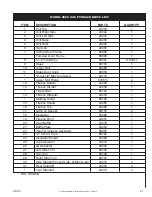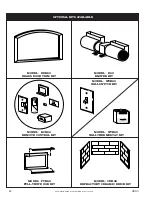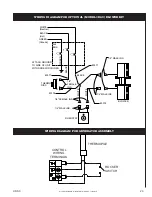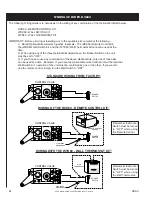
USSC
11
NOTE: DIAGRAMS & ILLUSTRATIONS NOT TO SCALE
VERTICAL TERMINATION
STEP 1:
Set the gas appliance in it's desired loca-
tion. Drop a plumb bob down from the
ceiling to the position of the appliance flue
exit, and mark the location where the vent
will penetrate the ceiling. Drill a small hole
at this point. Next, drop a plumb bob from
the roof to the hole previously drilled in
the ceiling, and mark the spot where the
vent will penetrate the roof. Determine if
ceiling joists, roof rafters, or other framing
will obstruct the venting system. You may
wish to relocate the appliance, or to offset,
as shown in Figure 15, to avoid cutting
loadbearing members.
PLUMBER'S TAPE
CONNECTED TO
WALL STRAP
(2) 45
ELBOWS
WALL STRAP
STEP 2:
To install the round support box/wall thimble
in a flat ceiling, cut a 11 1/2" x 12" hole in
the ceiling, centered on the hole drilled in
Step 1. Frame the hole as shown in Figure
16.
STEP 3:
Assemble the desired lengths of Pipe and
Elbows necessary to reach from the
Appliance adaptor up through the Round
Support box. Insure that all Pipe and Elbow
connection are in their fully twist-licked
position.
STEP 4:
Cut a hole in the roof centered on the small
drill hole placed in the roof in STEP 1. The
hole should be of sufficient size to meet
the minimum requirements for clearance
to combustibles, as specified on page 8.
Continue to assemble lengths of Pipe and
Elbows necessary to reach from the Ceiling
Support Box up through the roof line. A
galvanized finish is desirable above the
roofline, due to it's higher corrosion
resistance.
STEP 5:
Slip the flashing over the Pipe Section(s)
protruding through the roof. Secure the
base of the Flashing to the roof with roofing
nails. Insure the roofing material overlaps
the top edge of the Flashing as shown in
Figure 18. Verify that you have at least the
minimum clearance to combustibles at the
roofline.
(1) If an offset is necessary in the attic to
avoid obstructions, it is important to
support the vent pipe every 3 feet, to
avoid excessive stress on the Elbows,
and possible separation. Wall Straps are
available for this purpose.
(2) Whenever possible, use 45 degrees
Elbows, instead of 90 degrees Elbows.
The 45 degrees Elbows offers less
restriction to the flow of flue gases and
intake air.
Fig. 15
SHINGLES OVERLAP
TOP EDGE OF
FLASHING
CAP AND STORM
COLLAR NOT SHOWN
FOR CLARITY
Fig. 17
Fig. 16
12"
11 1/2"
FRAMING
CEILING JOIST
1-1/2 INCH LONG
WOOD SCREWS


